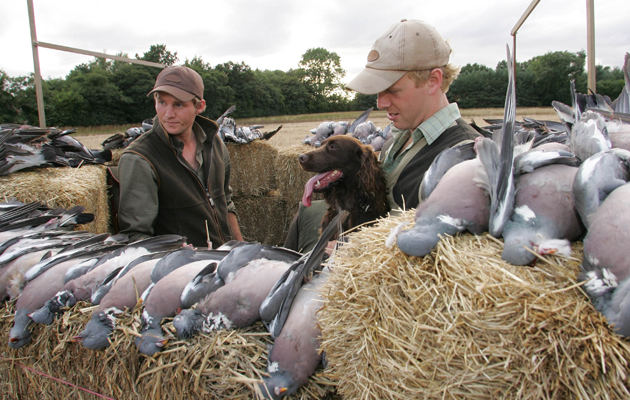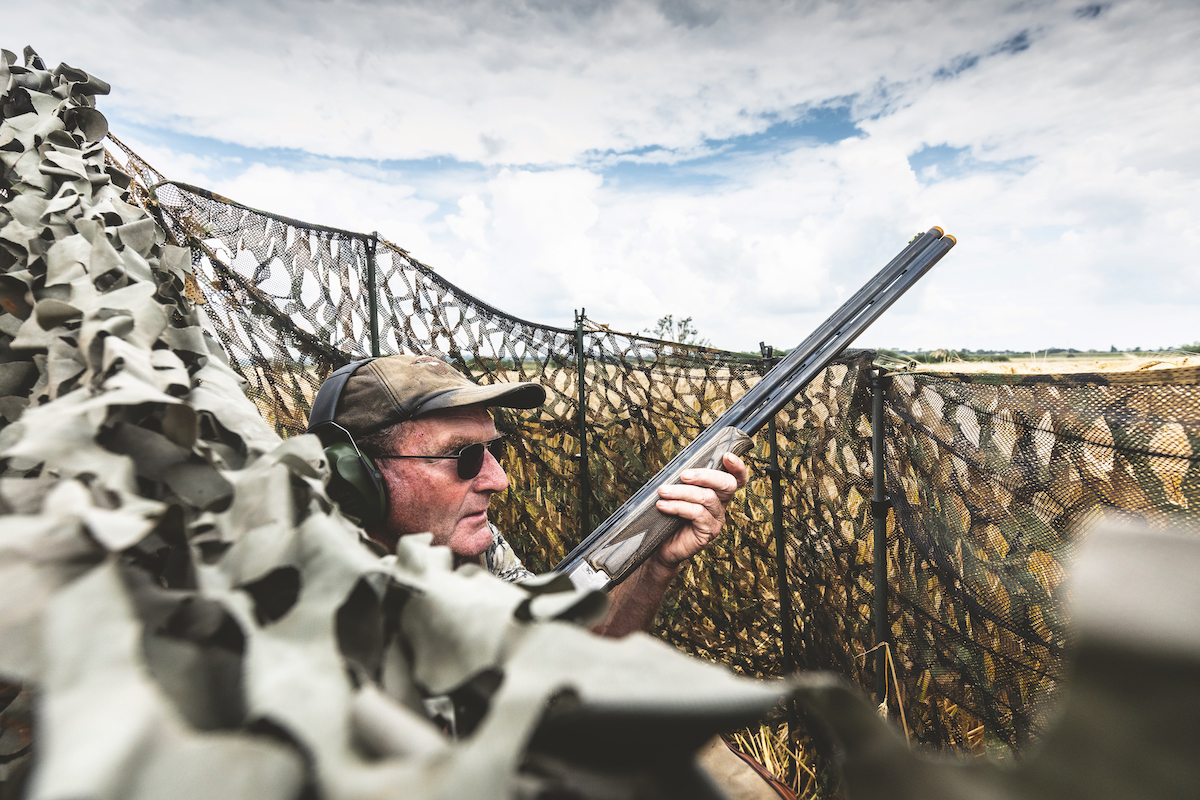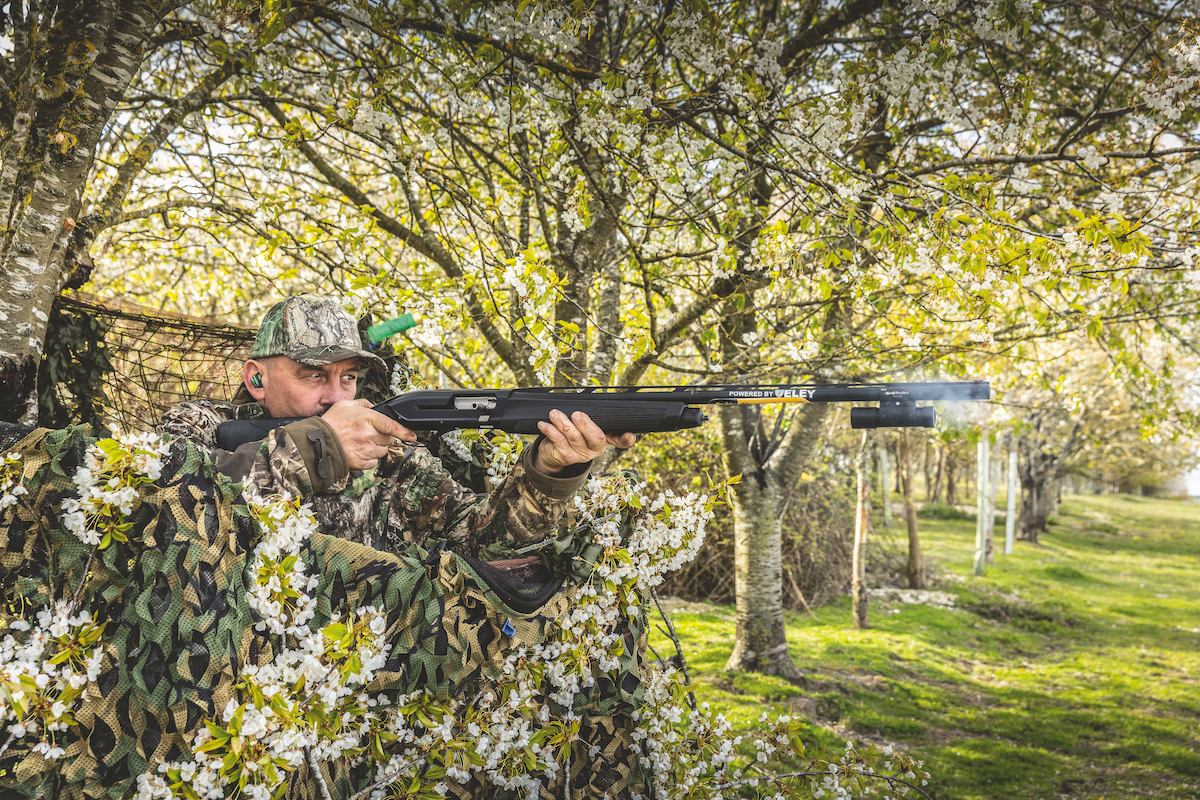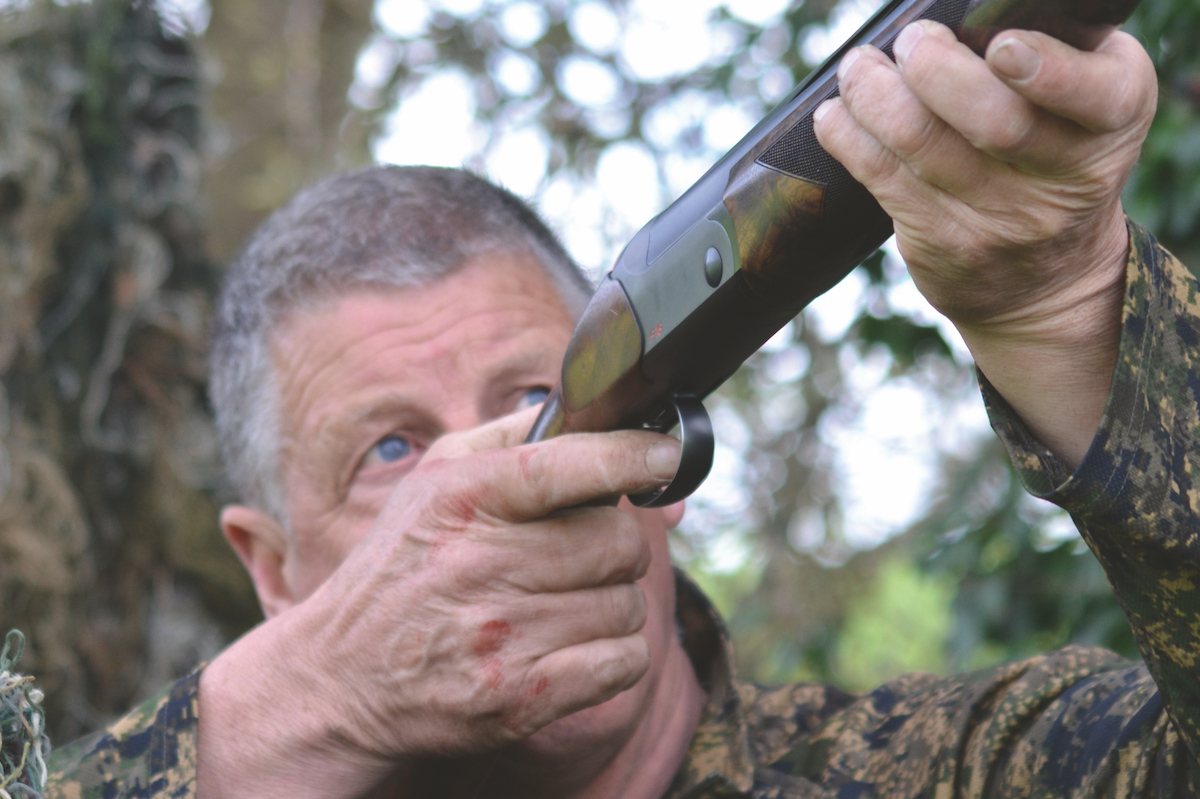Pigeon shooting predictions for 2015
Tom Payne looks back at the last pigeon shooting year and predicts what lies ahead for 2015

My pigeon shooting year runs from October to October – effectively the arable farming year. It’s been mixed emotions on the whole right from the start. There were a few late stubbles that came off providing some good sport, but the autumn drillings in my area provided little sport.
As I’m sure many pigeon shooters experienced around the country, the shooting through the winter was non-existent. This was all down to a phenomenal wild harvest, with huge quantities of food available in every hedgerow, and especially woodland. The aptly named woodpigeon were in their element with a fully stocked shop. As a result, farmers were given a winter’s rest from the destruction of heavy numbers of our grey warriors. For the pigeon shooter, our crop protection skills were not required for quite some time. Yes, it could be looked at as a depressing time for a pigeon shooter but I prefer to think that this fantastic bird was given a rest.
Coming into the late winter, roost shooting did provide some good outings, but again with such a mild winter the leaves were off the trees late so it took time really to get going. What followed, coming into the end of the shooting season and the early parts of the spring and spring drillings, I have to say was one of the weirdest periods of pigeon management I’ve had. Every outing felt like a bit of a guessing game. The maize gamestrips were laden with food with large numbers of birds hanging around for the feast that I was sure would happen. As soon as the crops were topped all went quiet. The next thing I knew I was shooting pigeon in early March over winter rape. Who would have thought that they would favour green over maize, with so much protein in the maize. I could only put it down to mild weather and warm nights.
I did have some great outings in the end on topped maize — but when I was least expecting to. As soon as the spring drillings got under way I was shooting over maize when I should have been shooting over spring barley. To say it felt like everything was back-to-front would be an understatement. When the spring drillings got under way in the good weather, drilling was everywhere and, with block farming, made shooting tricky.
Every field had packs of between 20 and 100 birds feeding on the food on top. This made bag building and recon hard. I don’t think I saw a single drilled field that had built up properly with every bird in the parish coming to the restaurant door.
The spring rape this year, once ready to be shot, took a long time to get going again, with the crop being in many cases a block situation. Finally, with the harvest just around the corner, for the first time in three years we were able to shoot several laid crops. With a few different strains of barley and some serious thunderstorms the pigeon just couldn’t resist the flat milky corn and i shot some fantastic bags, with the local populations being condensed to certain areas. Standing wheat shot well but i was mindful of the risk of doing more damage to the crop than the pigeon were.
The harvest got off to a belter, as normally happens with the first rape, and winter barley stubbles were a huge draw. In a summer like the one we’ve just had you know it’s not going to last long. By the time you’ve shot your first few stubbles you know there are hundreds more around the corner.
For most farmers the harvest was at least two to three weeks early. The quantity of food available to the pigeon population was staggering and it all just seemed to happen at once. From a reconnaissance point of view I didn’t know where to start. The stubbles did begin to shoot again properly, but only as fields were turned over, reducing the food available. As I write, there has been some wet weather slowing down the last couple of weeks, so I’m looking forward to some late bean stubbles to round off the year. It’s been a testing year, but, as always, I’m learning all the time.
What for the future?
Don’t get excited yet, but i think we are about to see a complete change in pigeon management. I can’t see the winter shooting being a great success due to what looks like another large wild harvest. At present, hedgerows and woodland are looking full (it’s rare to have two years on the bounce). It has been a prolific breeding year so numbers are high and will keep growing.
Shooters keep talking about there not being the numbers of pigeon, but what people really mean is they are not seeing the concentration of pigeon that they saw in the past. This is due to the quantity of food available for them across the country. But I think we could see a change back to times of old. Arable farming is about to go through a change if the new Common Agricultural Policy schemes are introduced.
Managing pigeon populations on arable land has become so difficult, mainly due to block farming. In this country, wheat and the normal staple diet of the woodpigeon, oilseed rape, have been grown in prolific quantities and the old-school crop rotations and crop varieties have not been grown. Block farming makes it difficult to control pigeon through the winter, as large blocks of rape are not easy to control. Block drilling over huge areas causes birds to be dispersed, and with so much of the same type of crop during harvest, all the stubbles happen at once.
So what’s going to change?
In 2015 the Single Farm Payment Scheme will be replaced by the Basic Payment Scheme. The Basic Payment Scheme will include new (greening) rules farmers must follow to get payment. This is voluntary.
This will result in further crop diversification and ecological focus areas. For large farms this will already be carried out to a certain degree, but farmers are being encouraged to diversify their cropping — for large farming companies this will be particularly pertinent. If a large company is managing three different farms as one crop at present, under the new rules they would have to treat them separately, potentially with three different crops, for the individual landowners to receive the Basic Payment Scheme. This could see an end to large block rotations.
Ecological focus areas are being encouraged in the form of catchcrops/covercrops. Nitrogen fixing crops such as lucerne and clover could become common crops through the winter, to be sprayed off before spring drilling. Non leguminous crops such as mustard will be grown placing green matter back into the soil and helping reduce weeds such as black grass, again ready for spring drilling. These are only a few varieties mentioned but are good pigeon crops that condition soil at the same time, ready for drilling.
Over-wintered stubbles will become encouraged to reduce weeds such as black grass, but in turn will provide shooting over volunteer crops. Variety is being offered through the winter months, which hasn’t been seen for years.
What is encouraging is that not only does this break the winter feeding up, but it will also make farms easier to manage pigeon-wise, as it should condense feeding populations in an area. Spring drillings will be more manageable, with beans and peas encouraged. So instead of large areas of the same, it will be broken, encouraging pigeon to focus on their chosen favourite. Also, with less of the popular crops such as oilseed rape and wheat being grown, smaller quantities of different crops could spread the harvest out and condense populations, making it easier to control pigeon, one restaurant door at a time.
The list of crops available for the schemes is staggering — some pigeon populations will love this and some not. It is going to be interesting to see what happens in 2015 to 2016, but there is every chance, with the suggested farming schemes, that pigeon shooters will be controlling pigeon over crops they may never have shot before.
What do you think the 2015 pigeon season has in store?









